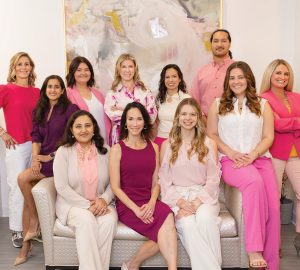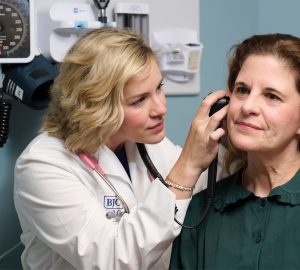People didn’t mean to be unkind. But they couldn’t help but gasp when they first saw little Sophia Goodrich. She was born with cleft lip, nose and palate, a condition in which the lip, nose and roof of the mouth don’t form properly during fetal development. The infant had wide gaps in that area of her face. “I knew something was wrong when I saw the sonogram, even before I noticed if she was a boy or a girl,” recalls mom Alycia Goodrich.
The baby’s pediatrician advised the Goodriches to take Sophia to St. Louis Cleft-Craniofacial Center at SSM Cardinal Glennon Children’s Medical Center. The center is staffed by experts from SLUCare, the physicians of Saint Louis University. “We fix the things that make us human,” says director Dr. Alexander Lin, assistant professor, division of plastic surgery, at Saint Louis University and section chief of pediatric plastic surgery at Cardinal Glennon. “Children are fragile. If they look and sound different from other kids, it affects their psychosocial development, sense of identity and self-esteem. Our goal is to help them look, speak and function more normally.”
About one in every 600 babies is born with a cleft lip and/or palate, making it the most common congenital birth defect. The condition can cause severe facial deformities, feeding problems, speech defects, misaligned teeth, poor growth and hearing problems. A cleft lip can range in severity from a small gap to a complete split that extends to the base of the nose; a cleft palate can affect one or both sides of the mouth, including gums and jaws.
Lin performs multiple cleft surgeries per week. “Repairing a severe cleft can involve reshaping the bones of the skull, face and jaw, as well as the cartilage and soft tissues of the face, ears, lips, palate and tongue,” he explains. The center’s team approach includes specialists in physical and occupational therapy, speech pathology, orthodontics, audiology and other fields, for comprehensive care of all the issues that can arise from cleft lip and/or palate. “All of us work together, making sure your child receives the best care.”
Treatment is customized to meet specific needs. Sophia, for example, underwent three surgeries during her first year. “The first reduced the gap in her lip and nose, the second reconstructed those areas, and the third repaired her palate so her speech could develop normally,” Lin says. Surgeries are carefully scheduled to give realigned tissues time to grow. “In the future she’ll probably need orthodontics and bone grafts to her upper jaw and gums, like most kids with clefts,” he adds.
Today, aside from twice-weekly speech therapy sessions to treat a slight defect, you’d never know that Sophia has been through so much. “She’s a feisty, adorable 3-year-old,” her mother says. “Now the whole world can see how beautiful she is. She’ll face the future with confidence, thanks to her wonderful SLUCare physicians.
[St. Louis Cleft-Craniofacial Center is located at SSM Cardinal Glennon Children’s Medical Center. Pictured on the cover: Sophia Goodrich and her surgeon, Dr. Alexander Lin. For more information, call 314.977.4440 or visit slucare.edu/plasticsurgery.]








